The Munich Metro has a total of 96 stations and 8 lines that transport 1.3 million passengers daily. It is 103 kilometers (65 miles) long.
The Munich Metro runs on a nearly 24-hour schedule, providing service from 4:00 a.m. to 1:00 a.m.
The price of a single ticket, for one zone, is €2.90 ($US 3.29)
There is no direct connection between the Munich Metro and the Franz Josef Strauss International Airport, but a connection is available from the S-Bahn.
Munich Metro
Among outsiders, Munich is undoubtedly one of Germany’s most renowned cities. Over time, it has come to be Europe’s major center for culture, finance, economics, technology, tourism and innovation. Studies show that these characteristics along with its extremely high standard of living make it one of the best places to live.
The city is home to 1.5 million people, a number that grows exponentially to 6 million residents, when factoring in the total metropolitan area. In terms of population, it is the third largest German city and the twelfth largest city in Europe.
Following the end of the Second World War, it was meticulously reconstructed, with an emphasis on the community’s future needs, such as large streets and robust public transportation systems.
Therefore, it was as early as 1953 when local authorities began to lay out the need for a subway system (a metro) that would serve the entire city center. However, it wasn’t until 1967, with the knowledge that Munich would be hosting the 1972 Olympic Games, when construction work and vehicle testing began.
With this news, construction of the Munich Metro became a priority over other works proposed by the German State of Bavaria (to which Munich belongs). As a result, the metro, known locally as the U-Bahn, opened its first commercial route in 1971. This was the U6 Line, which extended 12 kilometers (7.46 miles).
The Munich Metro continued to expand from this point, reaching 103 kilometers (64 miles), 96 stations and 8 lines in total. The system transports 1.3 million passengers daily.
 MUNICH U-BAHN (Metro Munich)
MUNICH U-BAHN (Metro Munich)
Lines and stations
The Munich Metro has 3 routes served by 8 commercial lines. Collectively, there are 103.1 kilometers (64 miles) divided among 96 stations between which 576 trains currently run. Included below are the metro lines:
Line U1
This route’s line includes Olympia-Einkaufszentrum – Westfriedhof – Hauptbahnhof – Sendlinger Tor – Kolumbusplatz – Mangfallplatz, which serves the districts of Moosach, Ludwigsvorstadt-Isarvorstadt, Altstadt, Au and Harlaching.
The line is 12.2 kilometers (7.6 miles) and includes 15 stations. It has been providing service since October 1980, which is also when the second route opened and began providing commercial service.
Line U2
Line U2 trains travel to the stations, Feldmoching – Harthof – Scheidplatz – Hauptbahnhof – Sendlinger Tor – Kolumbusplatz – Giesing – Innsbrucker Ring – Trudering – Messestadt Ost, which connect the districts of Feldmoching, Harthof, Schwabing-West, Ludwigsvorstadt-Isarvorstadt, Altstadt, Au, Giesing, Ramersdorf, Trudering-Riem and Messestadt Riem.
Line U2 currently extends 24.3 kilometers (15.1 miles) and includes 27 stations. It has been operating since 1980 on Munich metro Route 2.
Line U3
Munich Metro’s subway Line U3 covers the route, Moosach – Olympia-Einkaufszentrum – Olympiazentrum – Scheidplatz – Münchner Freiheit – Odeonsplatz – Marienplatz – Sendlinger Tor – Implerstraße – Obersendling – Fürstenried West”, which serves the districts of Moosach, Milbertshofen, Schwabing-West, Schwabing, Altstadt, Sendling, Obersendling and Fürstenried.
Line U3 includes 25 stations extending across 21.2 kilometers (13.2 miles). It has been operating since 1971 and travels along metro Route 1.
Line U4
The subway’s fourth line covers the Westendstraße – Heimeranplatz – Theresienwiese – Hauptbahnhof – Karlsplatz (Stachus) – Odeonsplatz – Max-Weber-Platz – Arabellapark route, which travels through the Bogenhausen, Laim, Schwanthalerhöhe, Ludwigsvorstadt-Isarvorstadt, Altstadt, Au-Haidhausen and Bogenhausen districts.
There is a total of 13 stations covering its 9.2 kilometers (5.7 miles). Line 4’s commercial service began running along the metro’s Route 3 in 1988.
Line U5
Line U5 includes the route Laimer Platz – Westendstraße – Heimeranplatz – Theresienwiese – Hauptbahnhof – Karlsplatz (Stachus) – Odeonsplatz – Max-Weber-Platz – Ostbahnhof – Innsbrucker Ring – Neuperlach Zentrum – Neuperlach Süd, which travels through the districts, Laim, Schwanthalerhöhe, Ludwigsvorstadt-Isarvorstadt, Altstadt, Au-Haidhausen, Ramersdorf, Neuperlach and Neuperlach.
Line U5 extends 15.4 kilometers (9.6 miles) and provides service to 18 stations. The line began operating on Route 3 on October 27, 1988.
Line U6
The route on Line U-6 includes Garching Forschungszentrum – Fröttmaning – Münchner Freiheit – Odeonsplatz – Marienplatz – Sendlinger Tor – Implerstraße – Harras – Klinikum Großhadern, which travels through the Garching, Freimann, Schwabing, Altstadt, Sendling and Großhadern districts.
There are 26 stations divided along a total of 27.4 kilometers (17 miles). It has provided service on Route 1 since 2006.
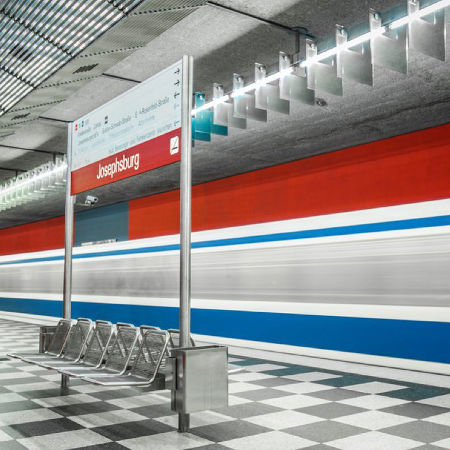
Line U7
Line 7’s route includes Olympia-Einkaufszentrum – Westfriedhof – Hauptbahnhof – Sendlinger Tor – Kolumbusplatz – Giesing – Innsbrucker Ring – Neuperlach Zentrum, which serves the districts of Moosach, Ludwigsvorstadt-Isarvorstadt, Altstadt, Au, Obergiesing-Fasangarten, Ramersdorf and Neuperlach
Line U7 serves 17 stations, but with the distinction of only operating during peak hours, in which it provides support to Lines U1 and U2 on Route 2.
Line U8
This line runs along the Olympiazentrum – Scheidplatz – Hauptbahnhof – Sendlinger Tor route which connects the districts of Milbertshofen, Schwabing-West, Ludwigsvorstadt-Isarvorstadt and Altstadt.
This line only operates on Saturday afternoons and provides service to 9 stations on lines U2 and U3.
Connections
The Munich Metro’s nearly 100 stations are extremely well connected to its other transportation systems. Riders can tranfer to the bus, tram and the Munich commuter rail, known as the S-Bahn.
Some system connections are featured below:
- Arabellapark: Serviced by the U4 line, this station has a connection to buses 154, 183, 184, 185 and 187 in addition to tram lines 16 and 17.
- Englschalking: This is serviced by the U4 line and connects to route S8 on the S-Bahn (commuter rail).
- Feldmochingstrong>: U2 services this station and provides connections to bus routes 170, 171, 172 and 173 and the S1 line on the S-Bahn.
- Fraunhoferstraße: This is serviced by the U1, U2 and U7 lines. There is a connection to bus route 132 and tram line 18.
- Giesing: This station is serviced by lines U2 and U7. It connects to buses 54, 59, 139, 147 and 220, tram line 18 and the S-Bahn’s S3 and S4 lines.
- Harras: This station is serviced by line U6. It connects to bus routes X30, 53, 54, 130, 132, 134 and 153 and the S-Bahn’s S7 line.
- Hauptbahnhof: This station is serviced by lines U1, U2, U7 and U8. It has a connection to buses X98, 58, 68 and 100 and the S-Bahn lines, S1, S2, S3, S4, S6, S7 and S8.
- Heimeranplatz: Lines U4 and U5 service this station which connects to bus routes 62, 63 and 130 and the S-Bahn lines S7 and S20.
- Hohenzollernplatz: This is serviced by lines U2 and U8. It connects to bus routes 53 and 59, in addition to tram lines 12 and 27.
- Karlsplatz: This station is serviced by lines U4 and U5. It has a connection to tram routes 16, 17, 18, 19, 20, 21, 22, 27 and 28 as well as the S-Bahn lines S1, S2, S3, S4, S6, S7 and S8.
- Marienplatz: This stop is serviced by the U3 and U6 lines. There is a connection to bus route 123 and tram line 19. There are connections with the S-Bahn’s S1, S2, S3, S4, S6, S7 and S8 lines as well.
- Max-Weber-Platz: This station is serviced by the U4 and U5 line and has a connection to bus route 155 in addition to tram lines 15, 25, 17 and 19.
- Moosach: The U3 line services this station. It has a connection to bus routes 51, 162, 163, 169, 176 and 710 and the S1 line on the S-Bahn. It also connects to tram route 20.
- Münchner Freiheit: This station is serviced by lines U3 and U6. There is a connection to bus routes 53, 54, 59 and 142 and tram line 23.
- Neuperlach Süd: This station is serviced by the U5 line. There is a connection to bus routes 195, 196, 199, 210, 212, 217, 222, 229 and 411 as well as the S-Bahn’s S7 line.
- Obersendling: The U3 provides service to this station which connects to bus line 134 and the S7 on the S-Bahn.
- Ostbahnhof: This station is serviced by the U5 line. It connects to buses X30, 54, 55, 58, 62, 68, 100, 145, 149, 155, 190, 191 and 213 and the S-Bahn lines S1, S2, S3, S4, S6, S7 and S8.
- Pasing: This station is serviced by the U5 line and has a connection to S-Bahn routes S3, S4, S6 and S8.
- Sendlinger Tor: This station is serviced by the U3 and U6 lines. There is a connection to bus routes 52 and 62 and tram lines 16, 17, 18, 27 and 28.
- Silberhornstraße: This station is serviced by the U2 and U7 lines. It has a connection to bus routes X30, 58 and 68 and tram lines 15 and 25.
- Trudering: This station is serviced by the U2 line. There is a connection to bus routes 139, 185, 192, 193 and 194 as well as the S-Bahn S4 and S6 lines.

Schedule
The Munich Metro’s nearly 24 hours of operation offer an extremely generous schedule to its riders. Its 21 continuous hours of service run from 4:00 a.m. to 1:00 a.m.
The hours are extended to 2:00 a.m. on Saturdays and Sundays, while service still begins at 4:00 a.m.
Benefiting from heightened demand, the metro provides 24-hour service on special occasions such as Christmas Eve, New Year’s Eve, Carnival and other holidays.
Trains generally run every ten minutes throughout the day. During peak hours, however, and thanks to the support provided by other transportation systems, the wait time is reduced to just 5 minutes.
Fares and tickets
The Munich Metro’s fare system is divided into zones, which correspond to the total fare each passenger pays. There is a total of four zones from the city center to the outlying areas. The zones are, in turn, divided into 4 rings, making up a total of 16. The subway maps display the zones, so passengers may either confirm which ones they need at the station or on the metro’s web page.
Once the number of zones and rings is determined, one can purchase a traditional ticket, common to most metro systems, or a reloadable IsarCard for frequent trips. As noted, the cost corresponds to the traveler’s chosen route.
An overview of the Munich Metro’s prices is included below:
Single Ticket
Ideal for occasional users, the single ticket includes just one trip. It is valid for 1 hour for “Short Trips”, 3 hours for “1 Zone” and 4 hours for “2 Zones, and so on.
- 1 Zone:€2.90 ($US 3.31)
- 2 Zones:€5.80 ($US 6.62)
- 3 Zones:€8.70 ($US 9.93)
- 4 Zones (or more):€11.60 ($US 13.24)
- Short Trip:€1.50 ($US 1.71)
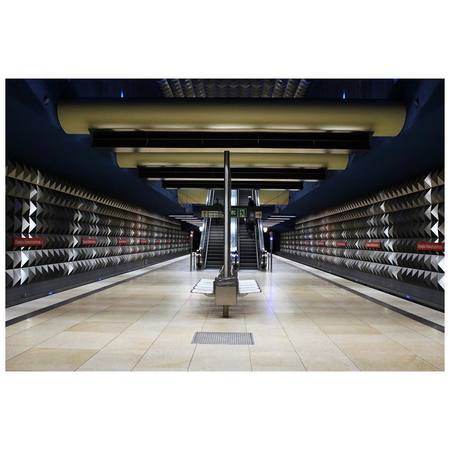
Stripe Ticket
This option is for riders who need to complete several daily metro trips. It includes a group of stripes and provides a better value than the Single Tickets.
Adults (over 21)
- 1 Zone: €2.80 ($US 3.20)
- 2 Zones:€5.60 ($US 6.39)
- 3 Zones:€8.40 ($US 9.58)
- 4 Zones (or more):€11.20 ($US 12.78)
- Short Trip:€1.40 ($US 1.60)
Youth (15-20)
- 1 Zone: €1.40 ($US 1.60)
- 2 Zones:€2.80 ($US 3.20)
- 3 Zones:€4.20 ($US 4.79)
- 3 Zones (or more):€5.60 ($US 6.39)
- Short trip:€1.40 ($US 1.60)
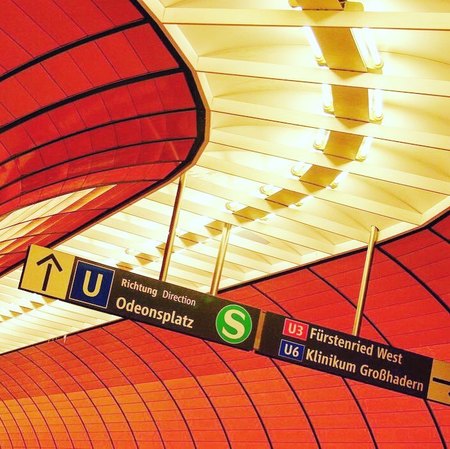 Odeonsplatz (Munich U-Bahn)
Odeonsplatz (Munich U-Bahn)
IsarCard Weekly
This weekly payment plan is only available to riders with an IsarCard, which can be refilled at metro ticket machines or ticket offices. Unlike the Single Ticket and Stripe Ticket, the fares for this payment plan do not correspond to the number of zones traveled, but rather to the number of “rings” traveled per week.
- 2 Rings: €15.40 ($US 17.45)
- 3 Rings: €18.60 ($US 21.08)
- 4 Rings: €22.10 ($US 25.04)
- 5 Rings: €25.30 ($US 28.67)
- 6 Rings: €29.00 ($US 32.86)
- 7 Rings: €32.60 ($US 36.94)
- 8 Rings: €35.70 ($US 40.45)
- 9 Rings: €39.30 ($US 44.53)
- 10 Rings: €42.70 ($US 48.38)
- 11 Rings: €45.70 ($US 51.78)
- 12 Rings: €49.00 ($US 55.52)
- 13 Rings: €52.60 ($US 59.60)
- 14 Rings: €56.30 ($US 63.79)
- 15 Rings: €59.40 ($US 67.31)
- 16 Rings: €63.10 ($US 71.50)
IsarCard Monthly
This monthly payment plan is only available to riders with the IsarCard. The card is reloadable and available at Munich Metro ticket machines and ticket offices. Unlike the Single Ticket and the Stripe Ticket, the fares for this payment plan do not correspond to the number of zones but rather the number of rings that the rider travels in a month.
- 2 Rings: €55.20 ($US 62.55)
- 3 Rings: €66.60 ($US 75.47)
- 4 Rings: €79.10 ($US 89.63)
- 5 Rings: €90.40 ($US 102.43)
- 6 Rings: €103.70 ($US 117.50)
- 7 Rings: €116.50 ($US 132.01)
- 8 Rings: €127.80 ($US 144.81)
- 9 Rings: €140.50 ($US 159.20)
- 10 Rings:€152.50 ($US 172.80)
- 11 Rings:€163.40 ($US 185.15)
- 12 Rings:€175.10 ($US 198.41)
- 13 Rings:€188.00 ($US 213.03)
- 14 Rings:€201.30 ($US 228.10)
- 15 Rings:€212.50 ($US 240.79)
- 16 Rings:€225.60 ($US 255.63)
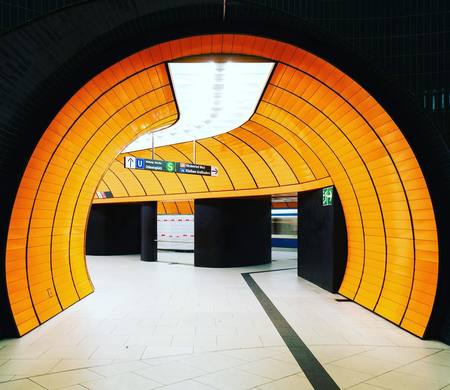 Munich
Munich
Regulations
- Munich Metro facilities must be properly used. Any damage or system failure due to passenger misuse will result in a fine from metro authorities.
- When transporting baggage, one must be mindful that it does not disturb other passengers. The transportation of extremely large merchandise or items (that are odorous, noisy, toxic, etc.) is prohibited as it will cause discomfort to other riders.
- Activating emergency devices without a valid reason will result in a fine from metro authorities.
- To ensure safety, one should avoid using skates, scooters, skateboards, or similar equipment in metro facilities. Violators will be expelled from the premises.
- Respectful behavior must be maintained in metro facilities. Physical, moral and/or verbal attacks on others will result in expulsion from stations as well as fines or police-pursued legal action.
- Smoking is prohibited in metro facilities.
- Panhandling is not permitted in station facilities.
- Propaganda, leaflet distribution and selling products on stations and trains without prior authorization is prohibited.
- No additional payment is required for animals transported in carrying cases. Additionally, one dog may ride along, free of charge while two or more require an additional ticket purchase.
- Bicycles are permitted on board the metro at an additional fee. However, they are not permitted during peak hours (6:00 a.m. – 9:00 a.m. and 4:00 p.m. – 6:00 p.m.)
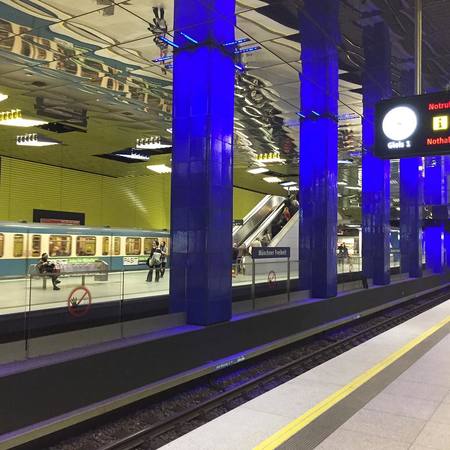
Airport connection
The Munich Metro does not have a direct connection to the Franz Josef Strauss International Airport, located 28 kilometers (17.4 miles) northeast of the city. However, it is possible to reach the airport terminal via the S-Bahn (the Munich commuter rail), which is also interconnected to the U-Bahn subway (metro) system.
The S-Bahn routes S1 and S8 travel in the direction of the airport and are accessible via metro stations, Hauptbahnhof, Karlsplatz and Ostbahnhof. The typical trip duration is about 40 minutes and the cost is €9.00 ($US 10.20).
There is also an “Airport-City-Day-Ticket” that permits full day access to all Munich Metro lines, trams, and buses at a cost of just €13.00 ($US 14.73) The ticket is available for purchase at the S-Bahn station neighboring the airport and some other stations on the S1, S2 and S8 lines. (details included on metro website)
Future expansions
There are plans to expand almost every one of the Munich Metro lines as ridership is expected to grow and serve new communities. Two examples are an extension to the de Hasenbergl Nord suburb on Line U1 and one towards Martinsried on Line U6. However, the most essential project, due to its size, will be the opening of the U9 line which will consist of the Martinsried – Implerstraße – Central Station – Giselastraße – Garching-Forschungszentrum route.
Service, on this line, is expected to begin in 2025 and according to official estimates, it is expected to transport 10 million passengers. Construction plans were introduced in 2014 and the cost will be between 250 – 350 million euros. An additional project, to support the current lines, will include the construction of Lines U10, U11, U12 and U26.
Munich U-Bahn map
- Also Known As: U-Bahn
- Passengers/Day 962000
- Fares: 2.30
- 24h operation: No
- Air Conditioning: No
- Walk between platforms: Yes
- Driverless trains: No
- Screen Doors Platforms: No
- Operator: Munich Public Transportation Company
- 2
- Munich Metro Official Website
Help us
If you consider that the information we provide is wrong, not accurated, outdated, translation contains errors, and you would like to help us to improve the file...you can contact us here.
Feel free to contact us if you dont find the system you're looking for and we'll add it as soon as we can!
Thank you very much!







